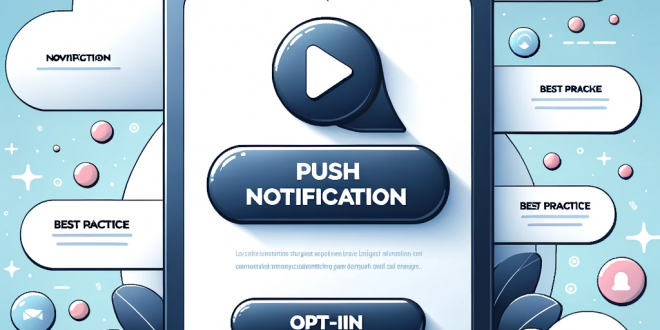Push notifications have emerged as a powerful tool for businesses to engage with their users. When executed properly, they can significantly boost user retention, increase conversion rates, and enhance the overall user experience. However, convincing users to opt-in for these notifications can be challenging. Below are some best practices to encourage users to subscribe to push notifications on the web:
- Value Proposition: Before anything else, clearly communicate the benefits of subscribing to your push notifications. Whether it’s exclusive deals, breaking news, or timely updates, users should immediately understand the value they’ll get.
- Timing is Key: Bombarding new users with a push notification request the moment they land on your website can be off-putting. Instead, wait for the right moment. For instance, if you run an e-commerce site, you might prompt them after they’ve viewed a few products or after they’ve made their first purchase.
- Contextual Prompts: Instead of generic requests, make your prompts context-specific. If a user has been reading articles about travel on your blog, your prompt can be, “Want to receive the latest travel tips and deals?”. This personal touch can significantly increase opt-in rates.
- Use Soft Opt-ins: Before triggering the browser’s default push notification prompt, consider using a soft opt-in. This is an in-house designed prompt that pre-qualifies users for the actual push notification request. If they decline the soft opt-in, you won’t waste your one chance with the browser’s default prompt.
- Design Matters: The design of your opt-in prompt can play a crucial role in a user’s decision. Ensure it aligns with your website’s overall design. It should be noticeable but not intrusive.
- Transparency: Clearly mention how often you’ll send notifications. Users are more likely to opt-in if they know they won’t be bombarded with messages every few minutes.
- Segment and Personalize: Once users have opted in, ensure the notifications they receive are relevant to them. Segment your audience based on behavior, location, or preferences and send tailored messages. Personalized push notifications can have up to 50% higher open rates compared to generic ones.
- Respect User’s Decision: If a user declines to receive notifications, respect their decision. Continuously pestering them can lead to a negative user experience. Instead, wait for a while, preferably a few weeks, before reprompting.
- Easy Opt-out: Just as users should find it easy to opt-in, they should find it equally straightforward to opt-out. This not only builds trust but also reduces the chances of users getting annoyed and blocking your notifications permanently.
- Test and Optimize: Continuously monitor the performance of your opt-in prompts. A/B testing different designs, messages, and timings can provide insights into what works best for your audience.
- Engage, Don’t Annoy: It’s essential to strike a balance between engaging users and annoying them. Sending too many notifications or irrelevant messages can quickly lead to users unsubscribing. Ensure every message adds value.
- Feedback Loop: Allow users to give feedback on the notifications they receive. This can provide invaluable insights into what content they find most engaging and help refine your push notification strategy.
In conclusion, while push notifications are a potent tool, they need to be used judiciously. By providing clear value, respecting user choices, and continuously optimizing your strategy, you can encourage more users to subscribe and engage with your content. Remember, the goal is not just to increase subscription rates but to build lasting and meaningful relationships with your users.
Give PushMonetization a try today!
 Push Monetization Blog
Push Monetization Blog

